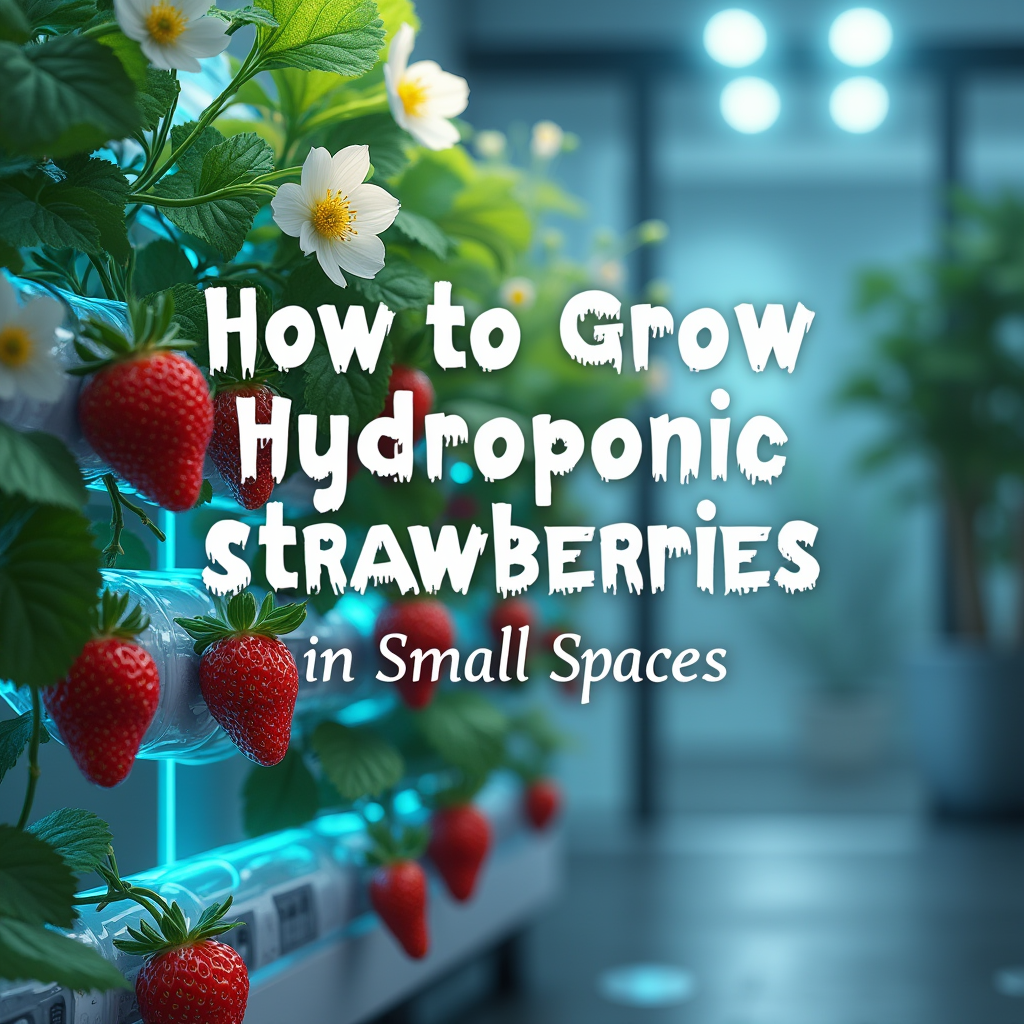Did you know hydroponic strawberries grow 30% faster and yield 50% more fruit than soil-grown plants? Whether you’re working with a tiny apartment balcony or a compact indoor garden, hydroponics lets you enjoy sweet, juicy strawberries year-round—no soil or backyard required. In this guide, you’ll learn exactly how to set up a small hydroponic system, choose the best strawberry varieties, and avoid common pitfalls. Let’s turn your space into a strawberry paradise!
Choosing the Best Hydroponic System for Strawberries
Not all hydroponic systems work equally well for strawberries. Here’s a breakdown of the top 3 systems for small spaces, ranked by efficiency and ease:
| System | Best For | Pros | Cons |
|---|---|---|---|
| NFT (Nutrient Film Technique) | Vertical setups, tight spaces | Uses 70% less water, ideal for strawberries | Requires consistent pump flow |
| DWC (Deep Water Culture) | Beginners, low maintenance | Simple design, affordable | Risk of root rot in stagnant water |
| Ebb and Flow | High yields, larger plants | Automates watering cycles | Needs more vertical space |
Best pick for small spaces: Opt for a vertical NFT system or a compact drip system. Both maximize space and provide excellent root aeration.
Best Strawberry Varieties for Hydroponic Growth
Not all strawberries thrive hydroponically. Prioritize day-neutral or everbearing varieties that fruit continuously:
- Albion: Disease-resistant, large berries, perfect for NFT systems.
- Seascape: Tolerates temperature swings; ideal for indoor setups.
- Quinault: Compact, everbearing, and thrives in small reservoirs.
Avoid June-bearing types—they need seasonal dormancy, which is hard to replicate in hydroponics.
How to Set Up Your Small Hydroponic Strawberry System
Step-by-Step Setup Guide
- Assemble Your System: Position NFT channels vertically or arrange drip-system trays.
- Prep Plants: Transplant strawberry seedlings into 3-inch net pots with clay pebbles or coconut coir.
- Mix Nutrients: Use a balanced hydroponic formula (e.g., General Hydroponics Flora Series) with a 6-3-9 NPK ratio.
- Adjust pH: Maintain 5.5–6.5 pH using pH-down solutions (strawberries hate alkaline water!).
- Light It Up: Hang full-spectrum LED grow lights 12–18 inches above plants for 14–16 hours daily.
Pro Tip: Space plants 8–12 inches apart to prevent mold and ensure airflow.
Hydroponic Nutrients for Strawberries: Formulas for Maximum Yield

Strawberries need precise nutrients to thrive. Use a two-part feeding strategy:
- Vegetative Stage (Weeks 1–4): Higher nitrogen (8-4-4 NPK) for leaf growth.
- Flowering/Fruiting Stage (Weeks 5+): Boost potassium (5-10-14 NPK) for sweeter berries.
Critical Tips:
- Monitor EC levels (1.8–2.2 mS/cm) weekly. Too high? Dilute the solution.
- Replace nutrients every 7–14 days to prevent salt buildup.
Best Lighting for Hydroponic Strawberries Indoors

Strawberries demand 14–16 hours of daily light to flower and fruit. For small setups:
- LED Grow Lights: Use full-spectrum LEDs (e.g., Spider Farmer SF-1000) for energy efficiency and balanced blue/red light.
- Positioning: Keep lights 12–18 inches above plants to avoid leaf burn.
- Cost-Saving Hack: Reflectors can increase light coverage by 30%!
Ideal Conditions:
- Temperature: 65–75°F (day), 55–65°F (night).
- Humidity: 60–70% (use a $15 hygrometer to monitor).
How to Pollinate Hydroponic Strawberries Indoors

No bees? No problem! Use these 3 easy pollination hacks:
- Brush Method: Gently swirl a small paintbrush inside each flower daily.
- Fan Trick: Run an oscillating fan near plants for 15 minutes to mimic wind.
- Shake It Up: Lightly tap flower stems to release pollen.
Repeat every 2–3 days during flowering for maximum fruit set.
Troubleshooting Common Hydroponic Strawberry Problems

| Issue | Cause | Fix |
|---|---|---|
| Yellow leaves | Nitrogen deficiency | Increase nitrogen in solution |
| Moldy berries | Poor airflow | Add a fan; prune dense leaves |
| Root rot | Stagnant water | Add an air stone; lower water temperature |
| Slow growth | Low light or cold temps | Upgrade lights; maintain 65°F+ |
How to Optimize Hydroponic Strawberries for High Yield
- Prune Runners: Trim offshoots to direct energy to fruit production.
- Rotate Plants: Move them every 2 weeks for even light exposure.
- Boost CO2: Add a $20 CO2 bag near your setup to speed up growth by 20%.
Conclusion: Start Your Hydroponic Strawberry Garden Today!
Growing hydroponic strawberries in small spaces is easier, faster, and more rewarding than soil gardening. With the right system (NFT or drip), nutrients, and lighting, you’ll harvest plump, sweet berries every 8–10 weeks—no backyard required.
Ready to taste your first homegrown strawberry? Grab a starter hydroponic kit and join thousands of urban gardeners revolutionizing their harvests!
FAQ: Hydroponic Strawberries Made Simple
Q: Can strawberries grow in deep water culture (DWC)?
A: Yes! Use air stones to oxygenate the water and monitor roots for rot.
Q: What’s the best pH for hydroponic strawberries?
A: 5.5–6.5. Test weekly with a $12 pH pen.
Q: How often should I change the nutrient solution?
A: Every 1–2 weeks to prevent nutrient lockout.
Q: Do hydroponic strawberries taste different?
A: They’re often sweeter due to controlled nutrient delivery!





